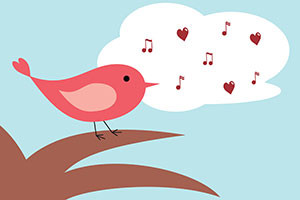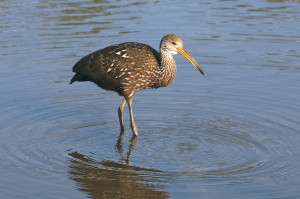 At certain times of the year, the Everglades can look like a scene out of Alfred Hitchock’s The Birds. Thousands of birds flock down to this warm climate to spend the winter and breed. For this article, we wanted to spotlight one species of bird that can be found in the Everglades: the Limpkin. This bird can actually be found in the Everglades year-round.
At certain times of the year, the Everglades can look like a scene out of Alfred Hitchock’s The Birds. Thousands of birds flock down to this warm climate to spend the winter and breed. For this article, we wanted to spotlight one species of bird that can be found in the Everglades: the Limpkin. This bird can actually be found in the Everglades year-round.
Limpkins are notoriously known to be noisy. In fact, you may have a better chance of hearing a limpkin than seeing one. Limpkins begin to make sounds at dusk and continue all through the night until dawn. Their cries aren’t sweet, usually they are loud screams, which are unmistakable.
This bird is related to rails and cranes. It’s a brown bird with white spots and streaks along its body. They have long necks, legs, and bills. Their long bills help them easily remove apple snails from their shells; apple snails are the main food source of the limpkin. Their bills, when closed, have a gap at the end that acts like tweezers. You can usually find the limpkin around areas where apple snails are abundant, but if apple snails are not easily found, the limpkin will eat other types of snails, freshwater mussels, insects, frogs, crustaceans, lizards, and worms.
You can find limpkins mainly around shallow bodies of water; they are a slow-moving bird with a high-stepping gait. The “limp” in limpkin comes from this gait that often gives off the appearance that the bird is limping even though it is not.
Limpkins stick with their own kind and do not mix in with other wading birds.
While nesting in the Everglades or other parts of Florida, they build their nests on top of floating vegetation, as well as high tree limbs. They can lay 3 to 8 eggs at a time. Florida is actually as far north as this bird goes. Limpkins can be found throughout the Caribbean, Central America, and South America.
Limpkins range from 25-28 inches in height with a wingspan of 39 to 42 inches in width.
Limpkins are not endangered or under watch, but at one point, their numbers were dwindling in Florida due to human development.
Want to have the chance to see (but most likely hear) this bird up close? Come out on an airboat tour to glide around the limpkin’s habitat. Captain Mitch’s Airboat Tours are a great way to explore all the ins and outs of this wetland. To book an airboat tour, click here or call 800-368-0065.
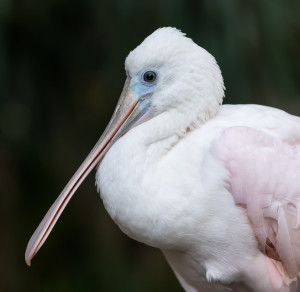 During the winter season, Florida can look like a scene out of Jurassic Park. The sheer scale and variety of birds flocking down here is a sight to be seen. Hundreds of birds of varying species stand side by side bodies of water and make the area their home for the winter/nesting season. One bird that can be spotted in southern Florida is the roseate spoonbill, and it happens to be a threatened species.
During the winter season, Florida can look like a scene out of Jurassic Park. The sheer scale and variety of birds flocking down here is a sight to be seen. Hundreds of birds of varying species stand side by side bodies of water and make the area their home for the winter/nesting season. One bird that can be spotted in southern Florida is the roseate spoonbill, and it happens to be a threatened species.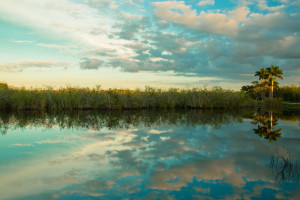 Lately, it seems like most news to come out about the Everglades isn’t too positive. Thankfully however, there was some good news to come out last month. Water quality is being restored in the Everglades. Over the past two decades, the Florida Department of Environmental Protection and the South Florida Water Management District (SFWMD) have had the goal of restoring water quality. Recent tests have shown that at least 90 percent of the Everglades now meets an “ultra clean” water quality when it comes to levels of phosphorus (10 parts per billion or less required by federal consent decree and under state law). Right now, 100 percent of the Everglades is below 8 parts per billion; 86 percent of the Everglades is at 8 parts per billion.
Lately, it seems like most news to come out about the Everglades isn’t too positive. Thankfully however, there was some good news to come out last month. Water quality is being restored in the Everglades. Over the past two decades, the Florida Department of Environmental Protection and the South Florida Water Management District (SFWMD) have had the goal of restoring water quality. Recent tests have shown that at least 90 percent of the Everglades now meets an “ultra clean” water quality when it comes to levels of phosphorus (10 parts per billion or less required by federal consent decree and under state law). Right now, 100 percent of the Everglades is below 8 parts per billion; 86 percent of the Everglades is at 8 parts per billion.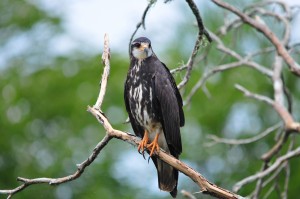 The Snail Kite (formerly known as the Everglades Snail Kite) was listed as endangered in 1967. Fast forward 49 years, this bird is still on the federal endangered species list and state regulators are being accused of not protecting the species properly. In 2000, there were 3,400 kites around and by 2008 there were only 700.
The Snail Kite (formerly known as the Everglades Snail Kite) was listed as endangered in 1967. Fast forward 49 years, this bird is still on the federal endangered species list and state regulators are being accused of not protecting the species properly. In 2000, there were 3,400 kites around and by 2008 there were only 700.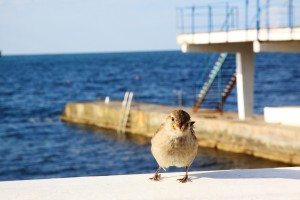 This winter has not been good for many birds in the Everglades, including the Cape Sable seaside sparrow. Its habitat has been threatened by substantial rain and water that was drained from Lake Okeechobee. For the sparrow’s nesting area, water levels were too high. The U.S. Fish and Wildlife Everglades Program knew what would happen once the water was released, but they never anticipated it being as bad as it turned out. Now, officials and biologists are concerned about this bird and its future.
This winter has not been good for many birds in the Everglades, including the Cape Sable seaside sparrow. Its habitat has been threatened by substantial rain and water that was drained from Lake Okeechobee. For the sparrow’s nesting area, water levels were too high. The U.S. Fish and Wildlife Everglades Program knew what would happen once the water was released, but they never anticipated it being as bad as it turned out. Now, officials and biologists are concerned about this bird and its future.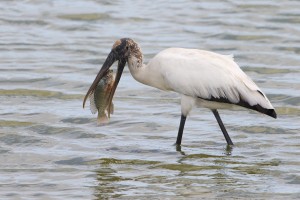 The Everglades needs water to survive; it’s a water-based ecosystem made up of sawgrass marshes, waterways, prairies, forested uplands, and ponds, including Paurotis Pond. One reason the area needs water so badly is because it’s home to an abundance of plants, animals, and marine life. Not only does water give the plants and animals sustenance, it gives them a home.
The Everglades needs water to survive; it’s a water-based ecosystem made up of sawgrass marshes, waterways, prairies, forested uplands, and ponds, including Paurotis Pond. One reason the area needs water so badly is because it’s home to an abundance of plants, animals, and marine life. Not only does water give the plants and animals sustenance, it gives them a home.